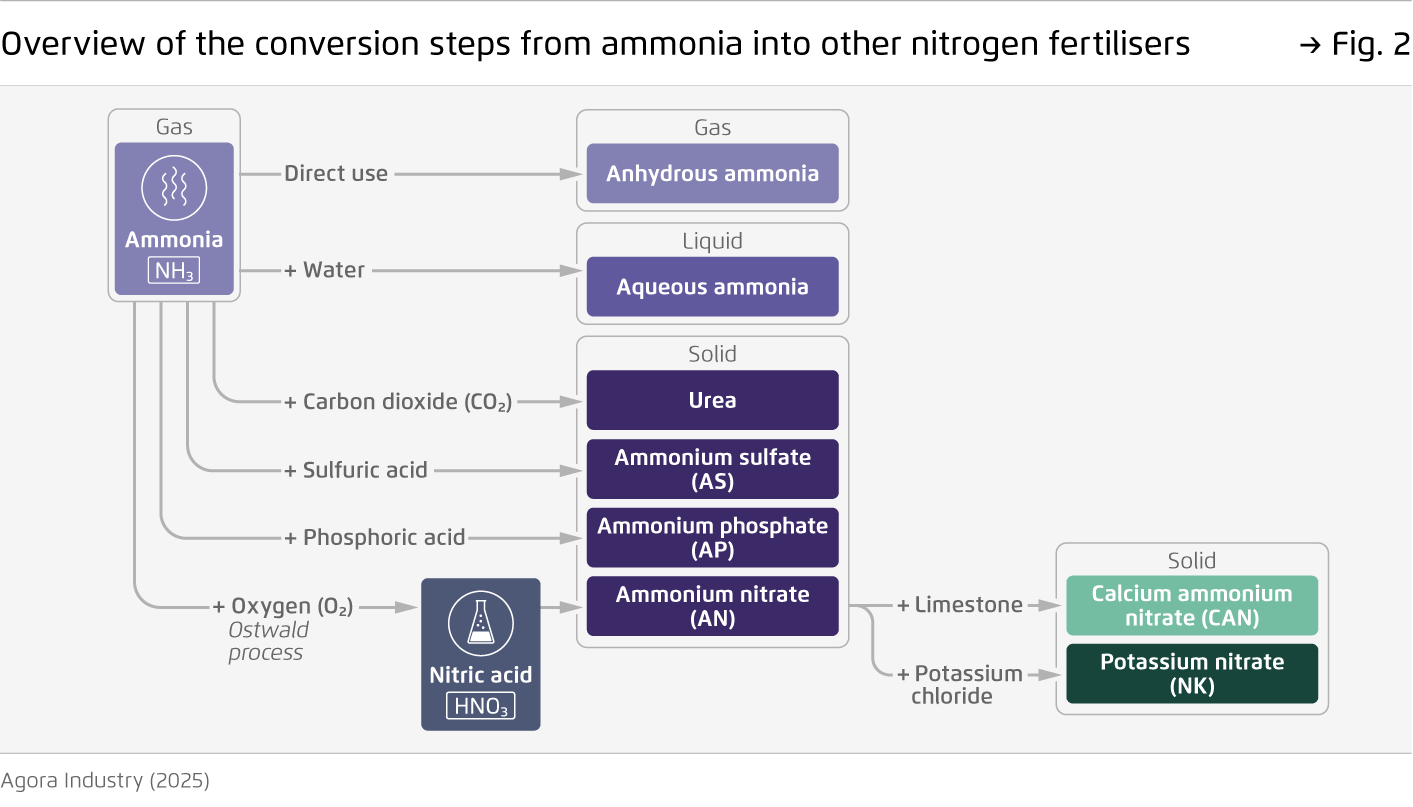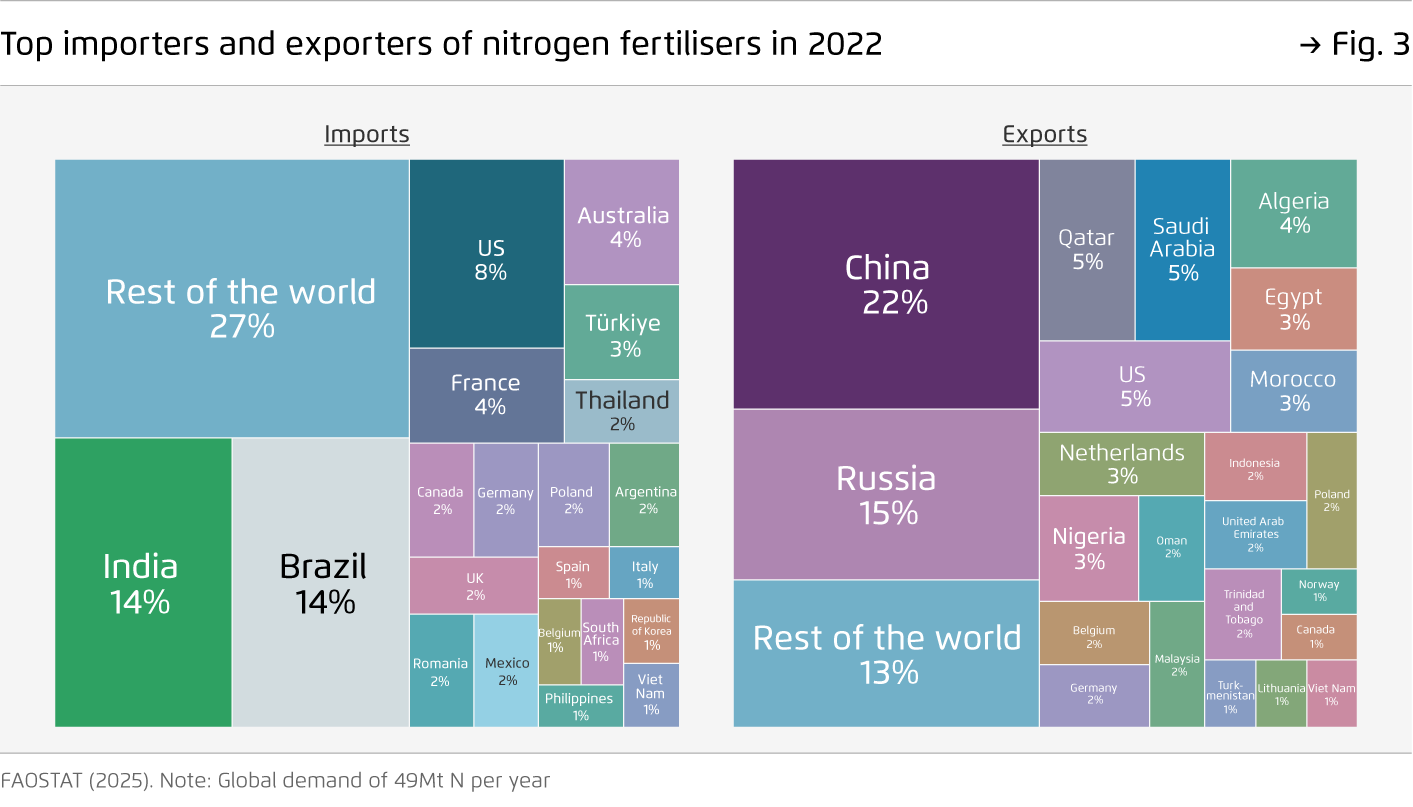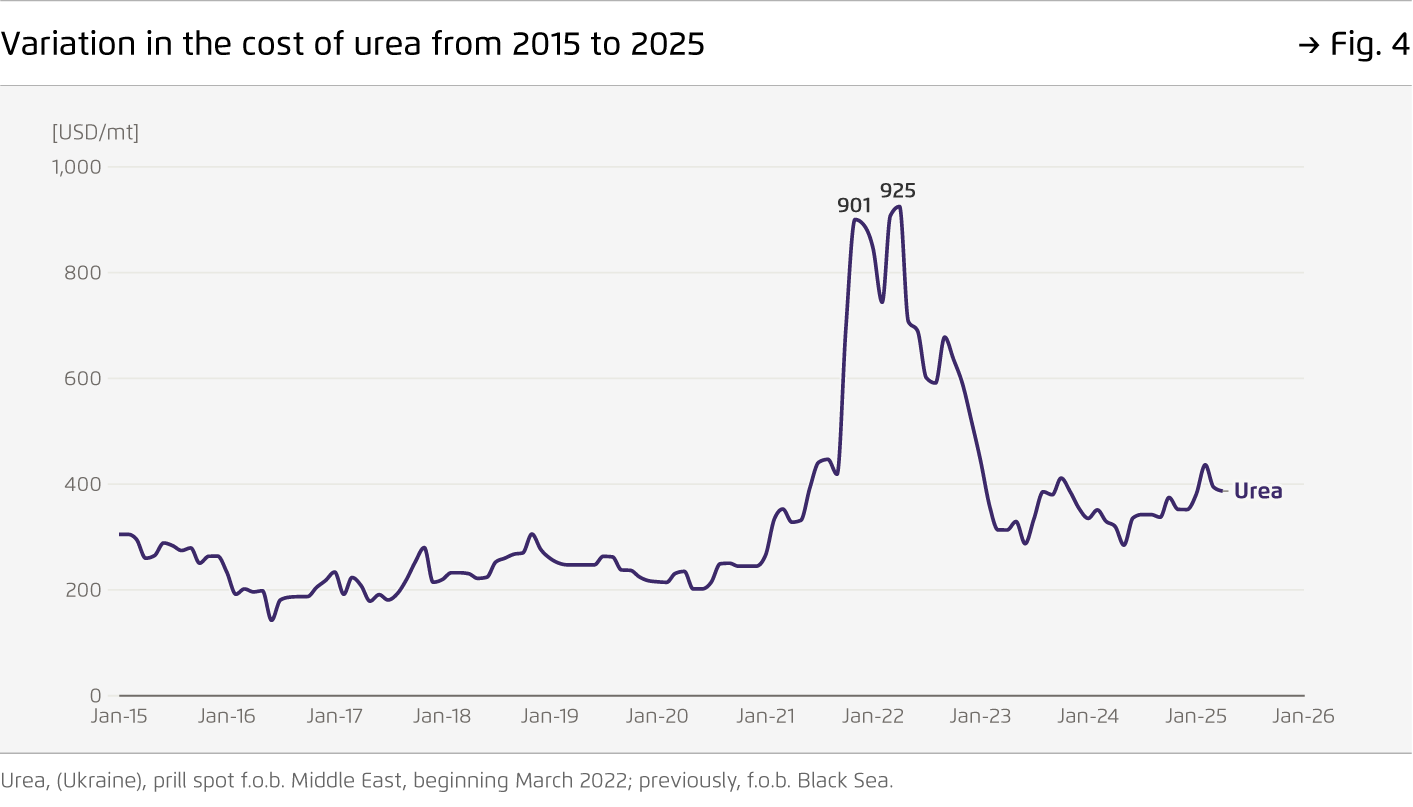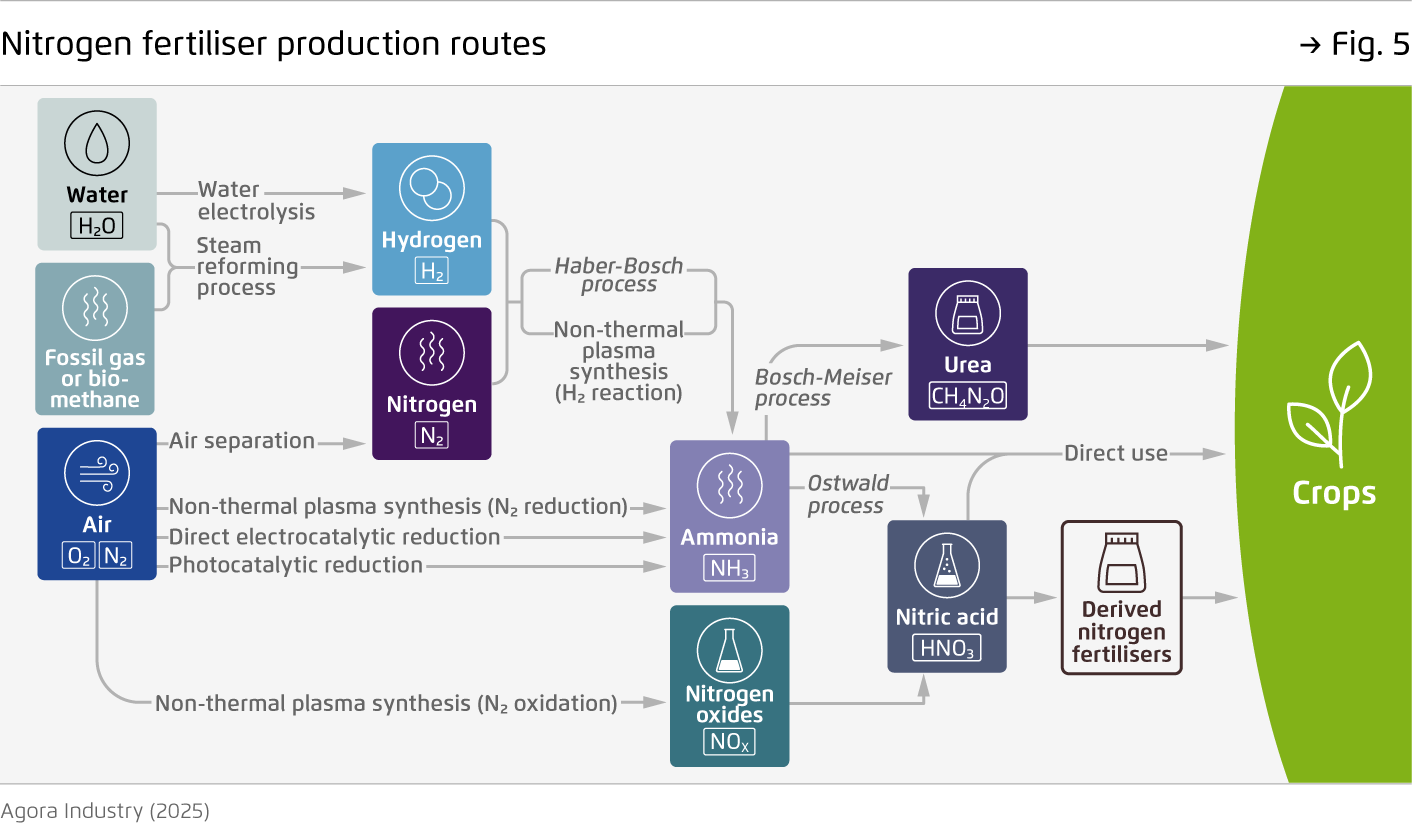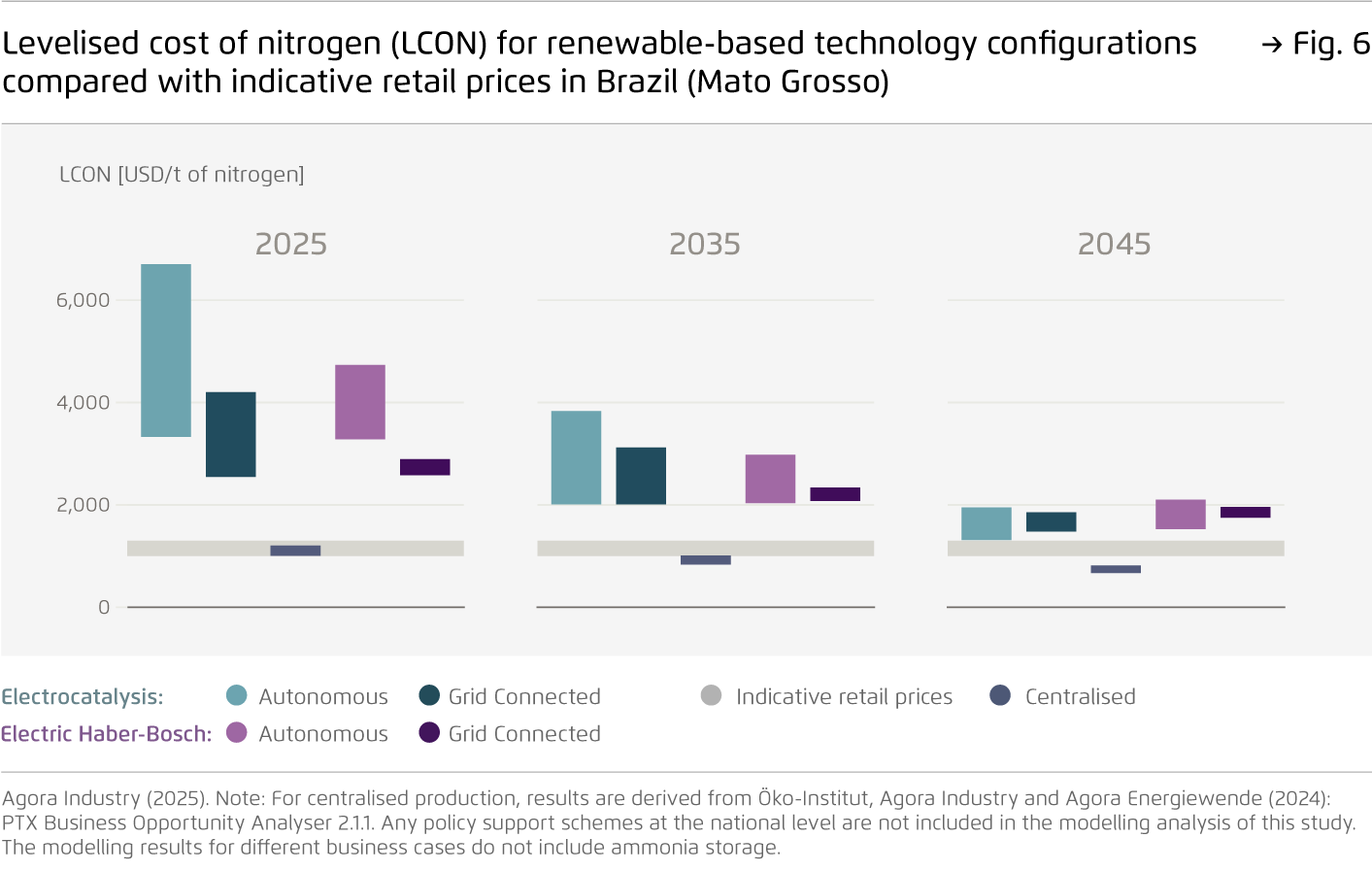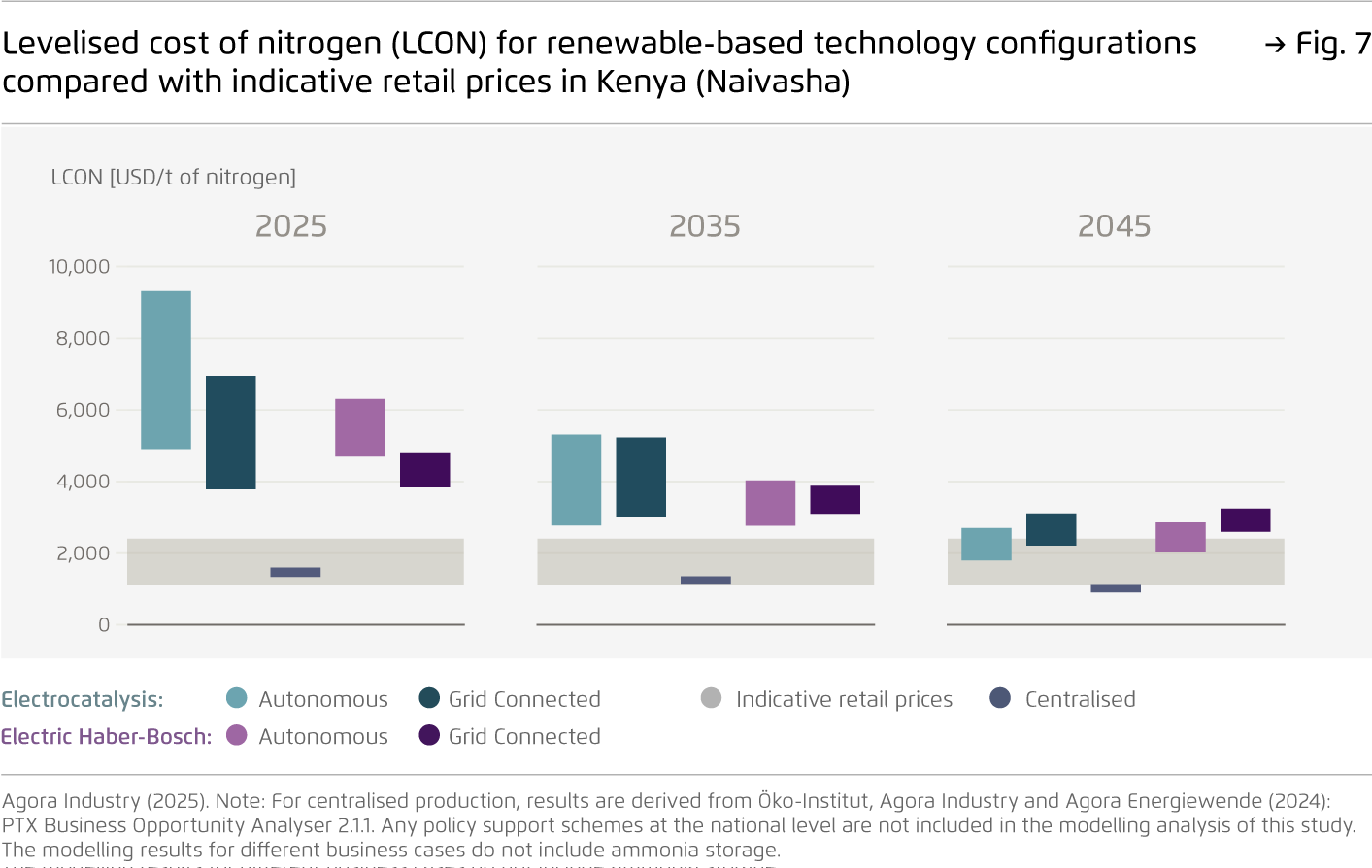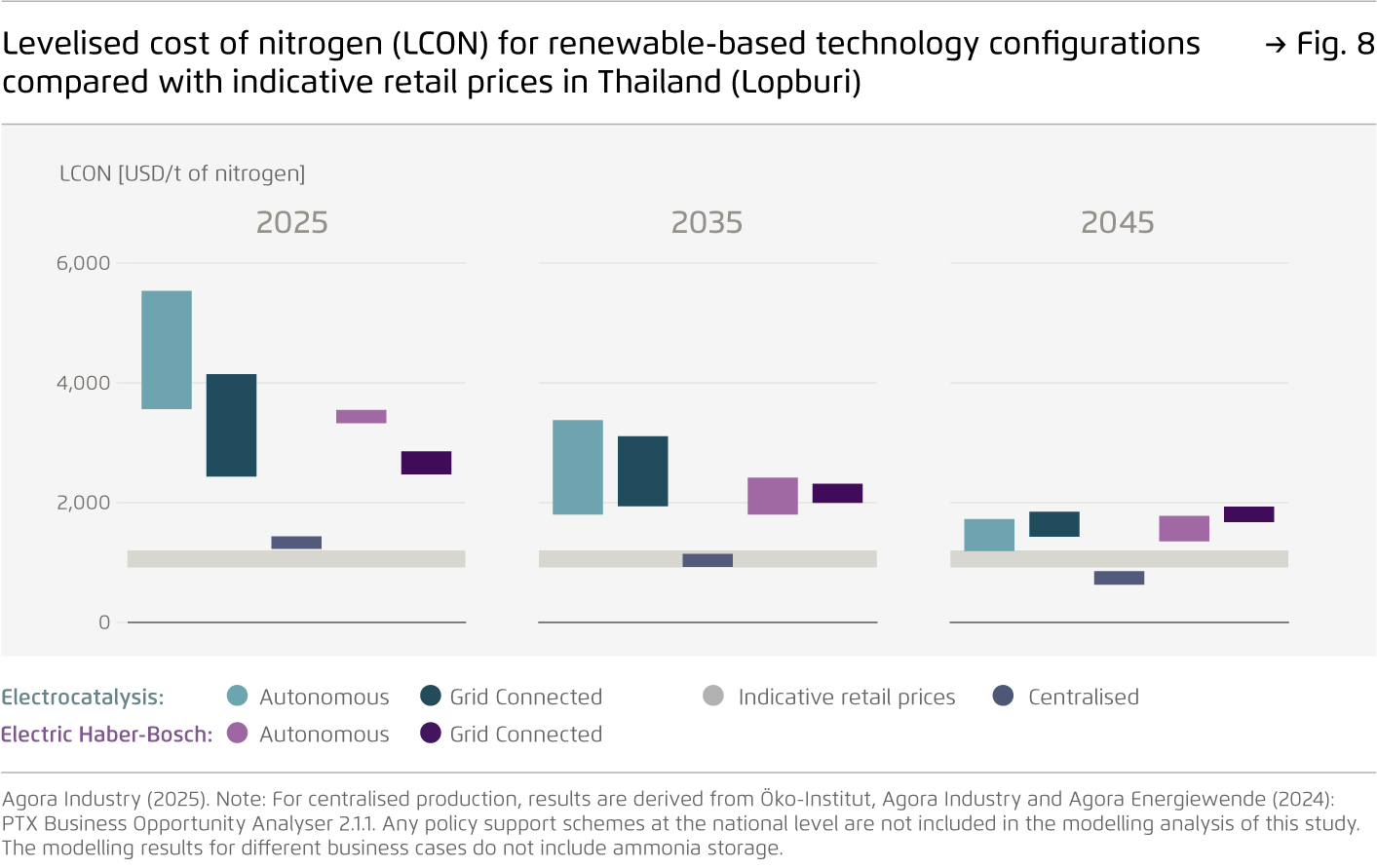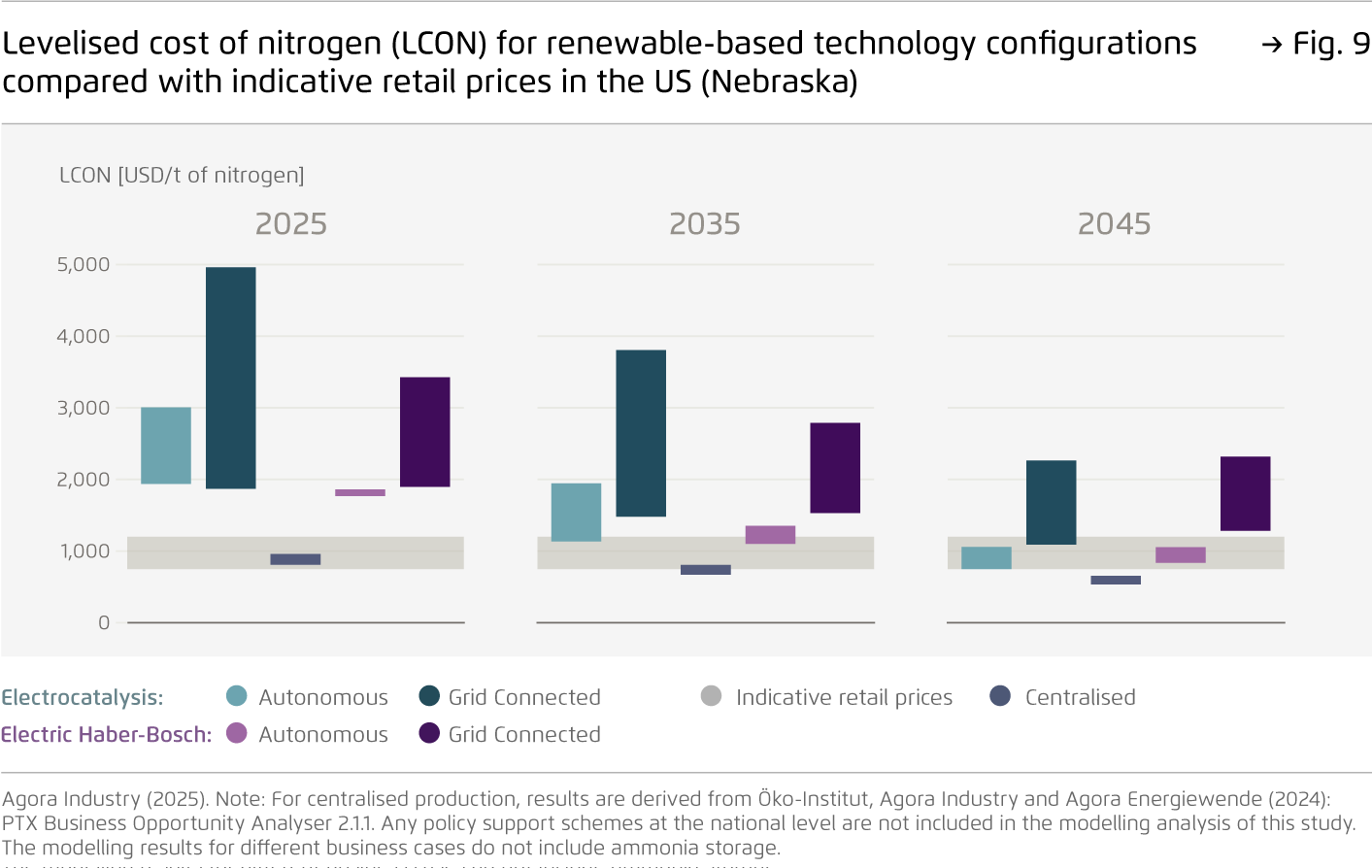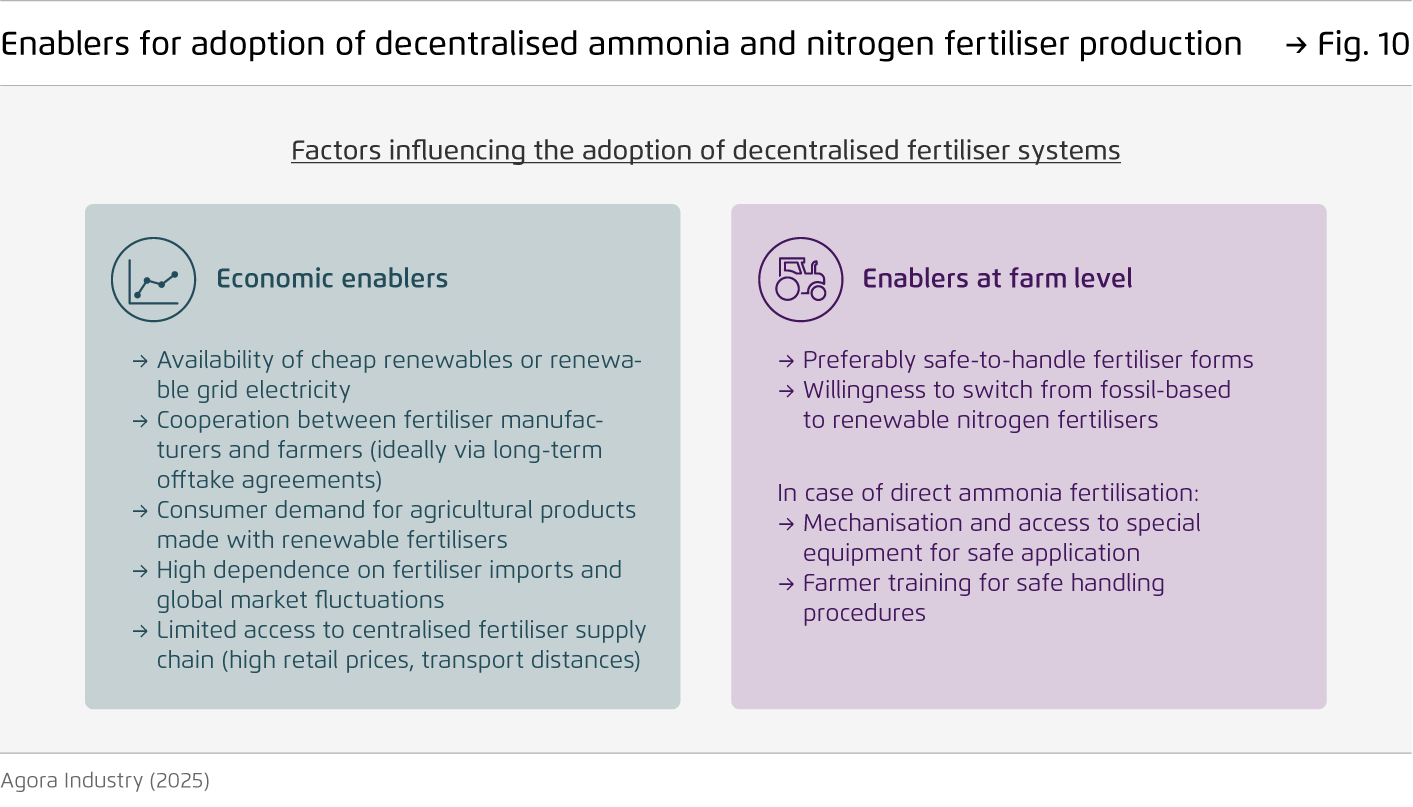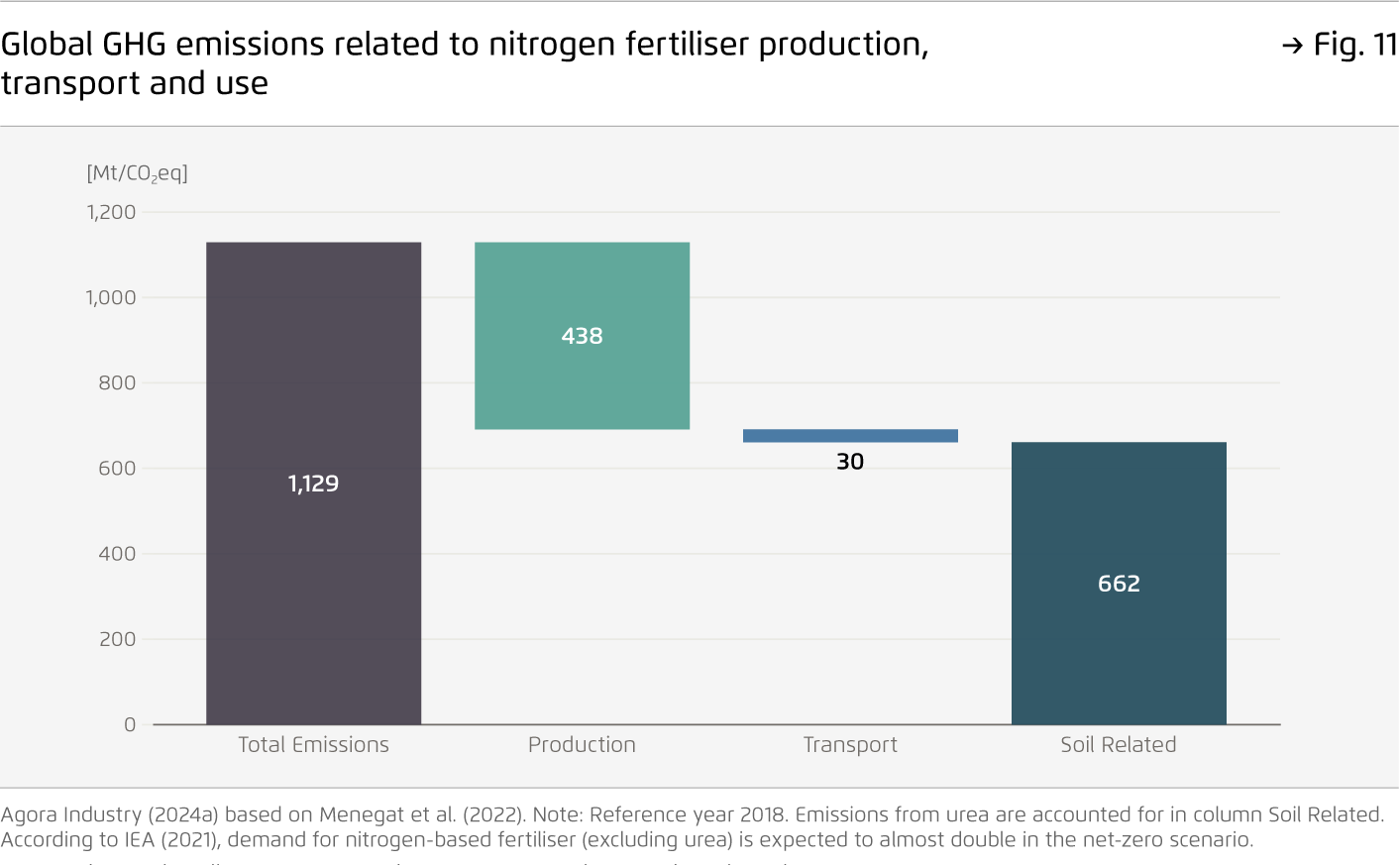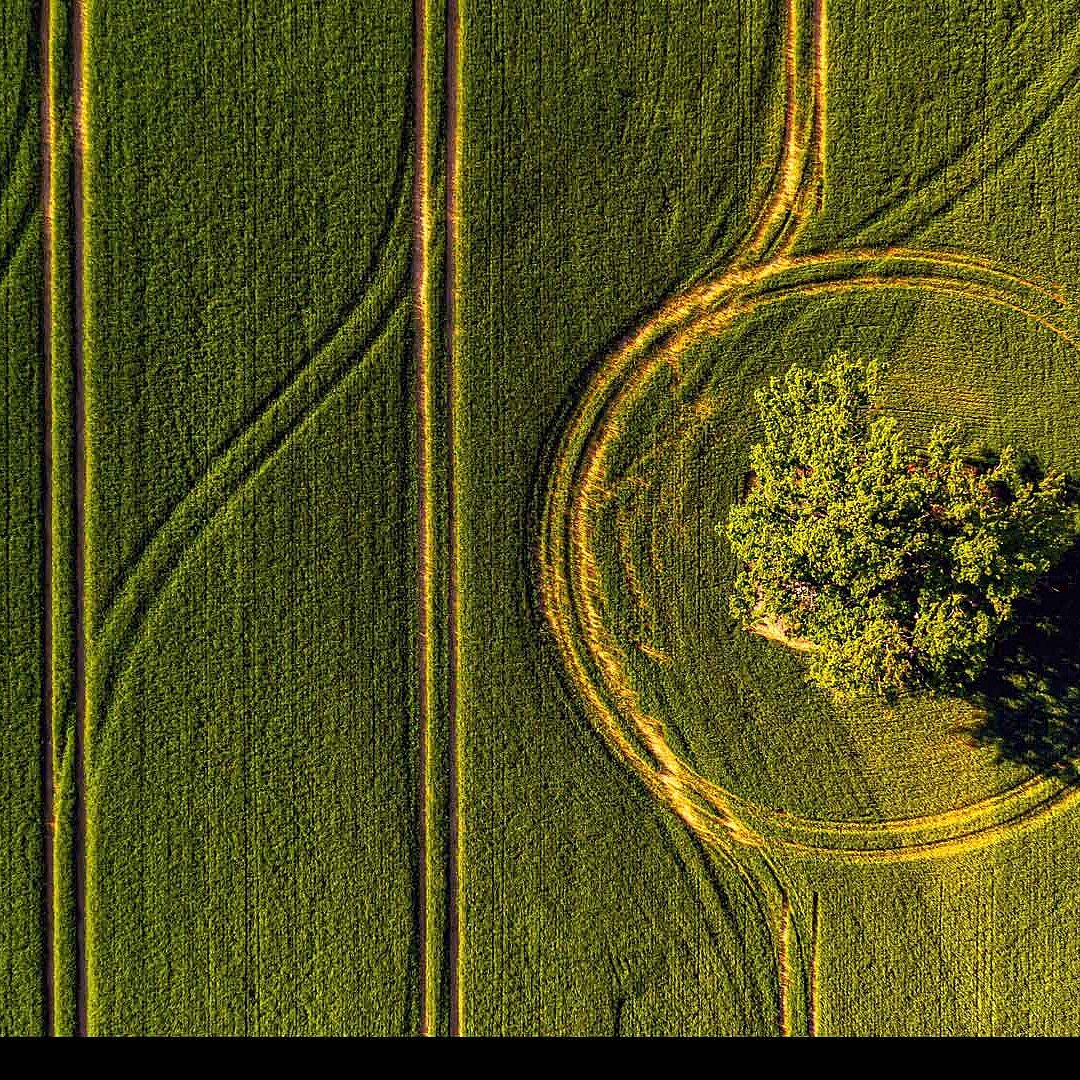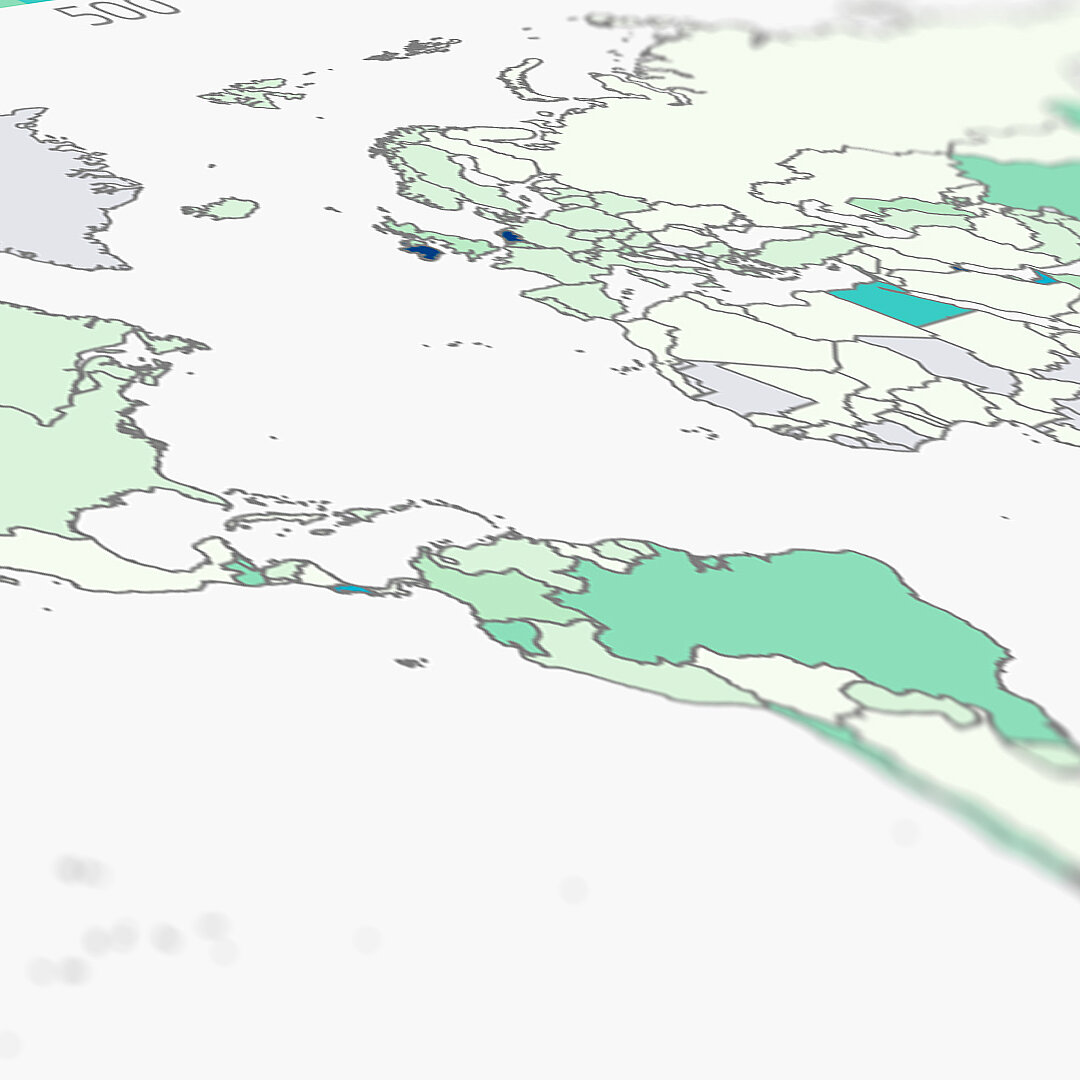-
Transitioning from fossil-based ammonia and nitrogen fertiliser to renewables-based production has significant potential to reduce emissions and enhance global supply chain resilience.
Replacing coal and fossil gas with renewables could eliminate emissions from production, which currently account for around 30 to 40 percent of the fertiliser sector’s total greenhouse gas output. It would also enable decentralised supply, strengthening supply security and lowering exposure to global fertiliser price volatility.
-
Decentralised nitrogen fertiliser production can complement existing supply chains to help decarbonise the sector, particularly in locations heavily reliant on imports.
Driven primarily by renewable energy-based technologies, decentralised systems also reduce transport and distribution barriers where access to production hubs or import ports is limited, particularly in Global South countries.
-
Locations with cheap renewable energy and large-scale agriculture have good conditions in place for decentralised fertiliser production.
While still about twice as expensive as centralised renewable options, cost parity with retail prices is possible by 2035 in selected areas. Policies promoting renewable energy, de-risking mechanisms and financial support for both supply and demand are essential to making decentralised technologies more competitive.
-
While decentralised renewable ammonia offers important climate benefits, its direct use as fertiliser requires thoughtful management.
Proactively addressing ammonia’s toxicity is critical to ensuring environmental protection and user safety, through clear regulations, robust safety standards and comprehensive training. These are key prerequisites for responsible integration of decentralised production technologies into fertiliser and agricultural development strategies.
Breaking new ground: decentralised renewable nitrogen fertilisers
Exploring opportunities and barriers
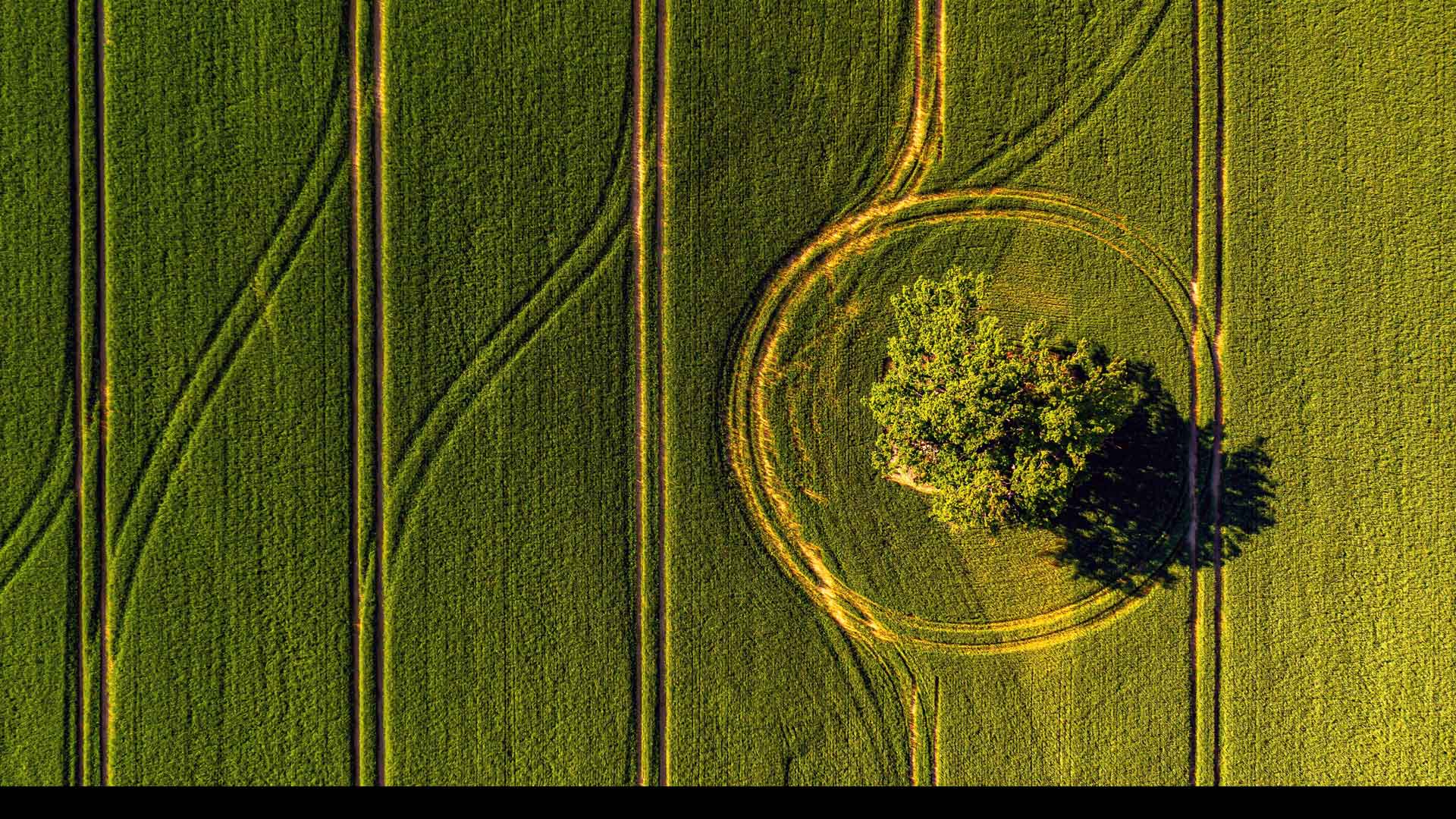
Summary
The global production of ammonia and nitrogen fertilisers is heavily dependent on fossil fuels, making it one of the most energy- and carbon-intensive industries. Currently, the fertiliser sector accounts for around 1.3 percent of global greenhouse gas emissions. At the same time, demand for fertilisers continues to grow, particularly in the Global South, driven by population and economic growth and expanding agricultural needs. Yet many countries in these regions lack the production facilities needed to meet current and future demand, leaving them reliant on volatile global markets and vulnerable to supply disruptions.
As countries seek to secure critical industrial supply chains and transition towards climate-resilient economies, new strategies are emerging to diversify fertiliser supply and promote domestic low-carbon production. Renewable-rich countries in the Global South have an opportunity to develop local, sustainable value chains, reducing emissions and mitigating their reliance on fossil fuels and exposure to international fertiliser market fluctuations.
Decentralised renewable ammonia and nitrogen fertiliser production is now being implemented in several regions as a complementary strategy to accelerating the decarbonisation of this essential industry. Although the global market for such decentralised systems remains in its early stages, as shown in our Global Green Fertiliser Tracker, it represents a promising pathway towards transforming how fertilisers are produced and distributed worldwide.
This study aims to inform discussions on the adoption of decentralised renewable ammonia and fertiliser production in Global South countries. It scopes the competitiveness of renewable-based decentralised production technologies through case studies from Brazil, Kenya, Thailand and the United States. The analysis also addresses important social and environmental considerations, including the need for caution when using ammonia directly as a fertiliser due to its high toxicity to humans and ecosystems. Finally, the study provides policy recommendations to support decision-makers and policy experts in evaluating and advancing renewable, decentralised ammonia and nitrogen fertiliser production as a strategy for sustainable industrial and agricultural development and climate resilience.
Key findings
Bibliographical data
Downloads
-
Impulse
pdf 6 MB
Breaking new ground: decentralised renewable nitrogen fertilisers
Exploring opportunities and barriers
All figures in this publication
Comparison between centralised vs decentralised ammonia .and nitrogen fertiliser production
Figure 1 from Breaking new ground: decentralised renewable nitrogen fertilisers on page 6
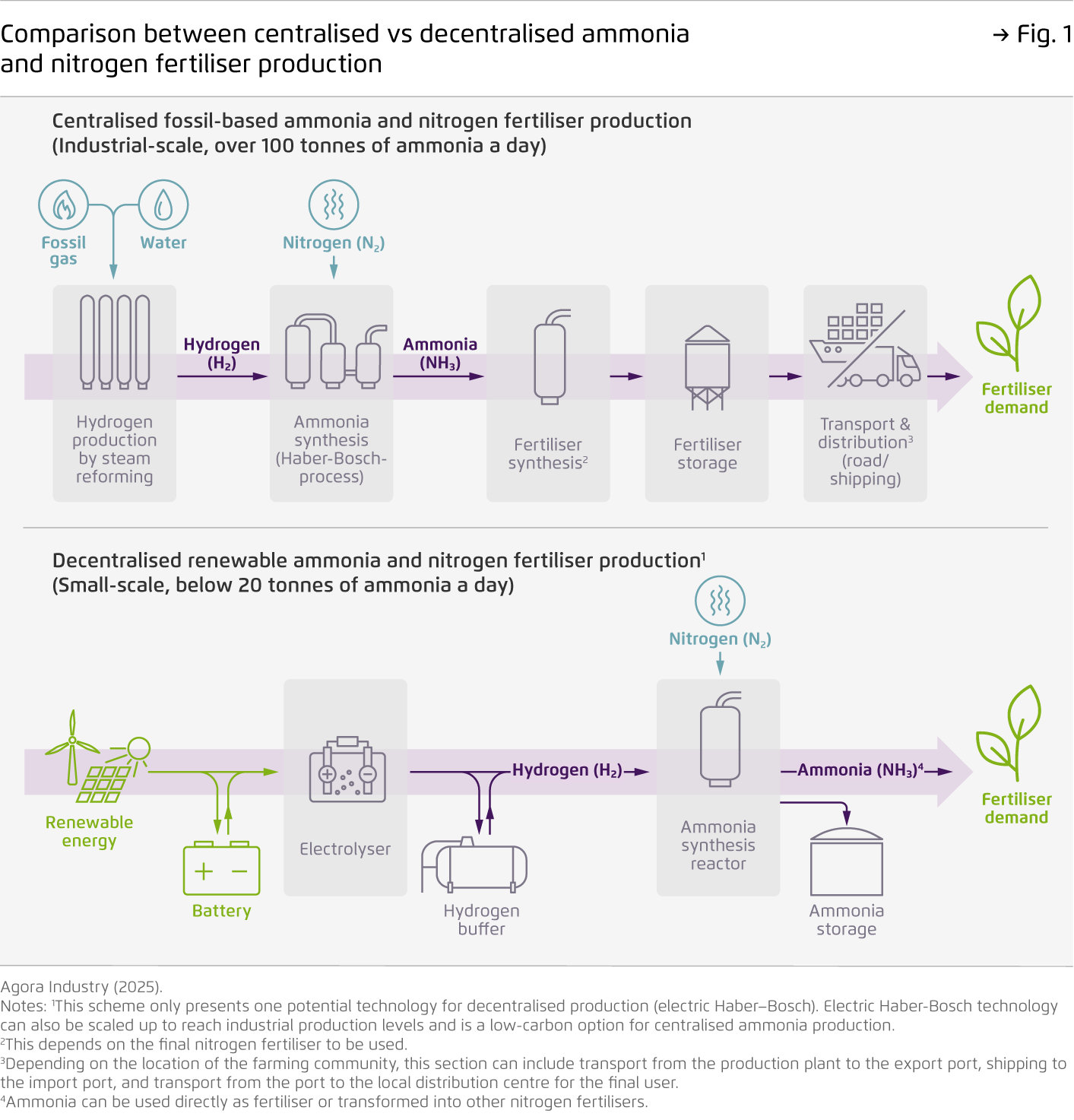
Overview of the conversion steps from ammonia into other nitrogen fertilisers
Figure 2 from Breaking new ground: decentralised renewable nitrogen fertilisers on page 7
